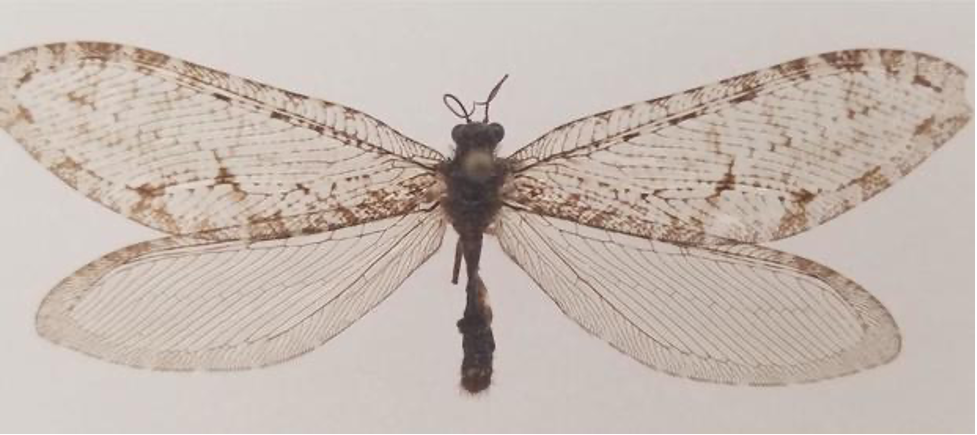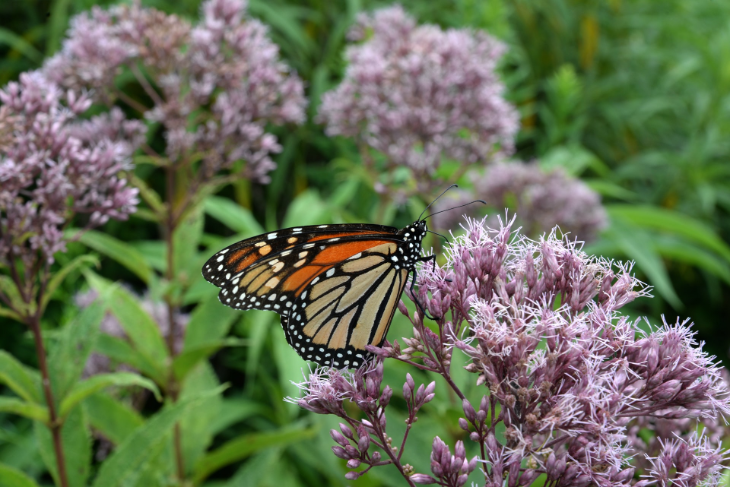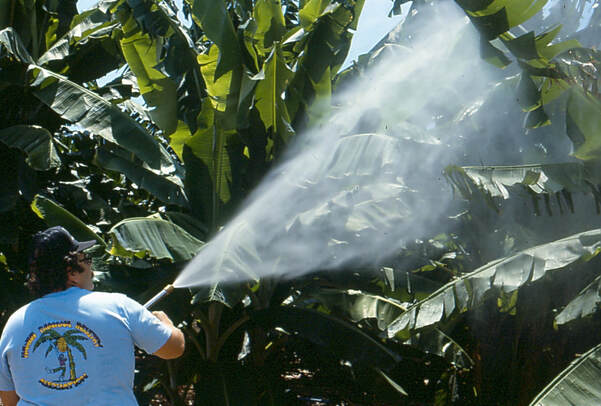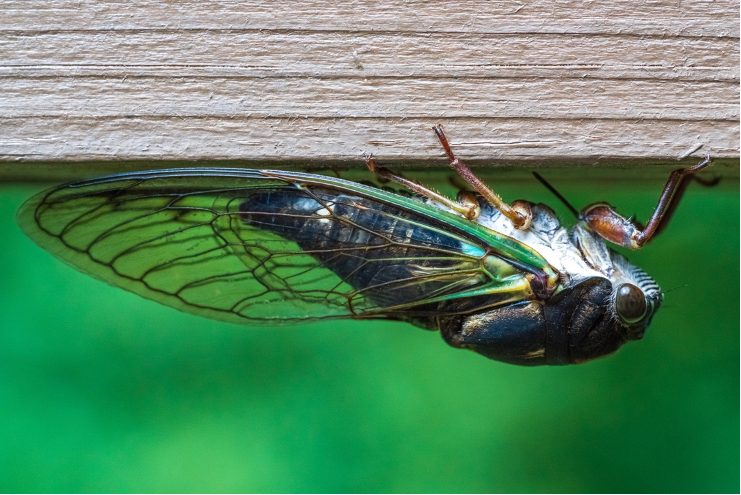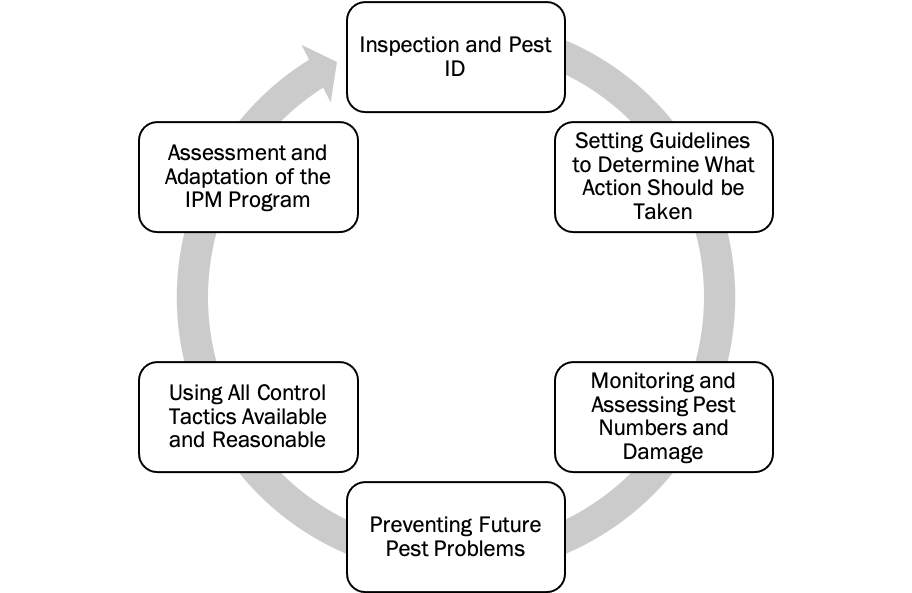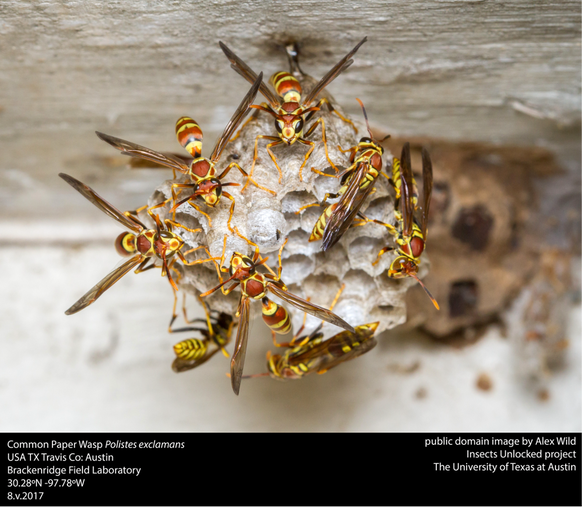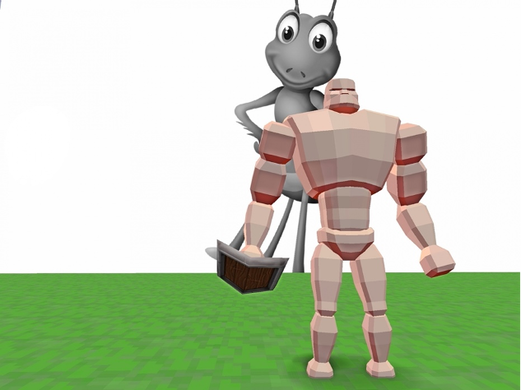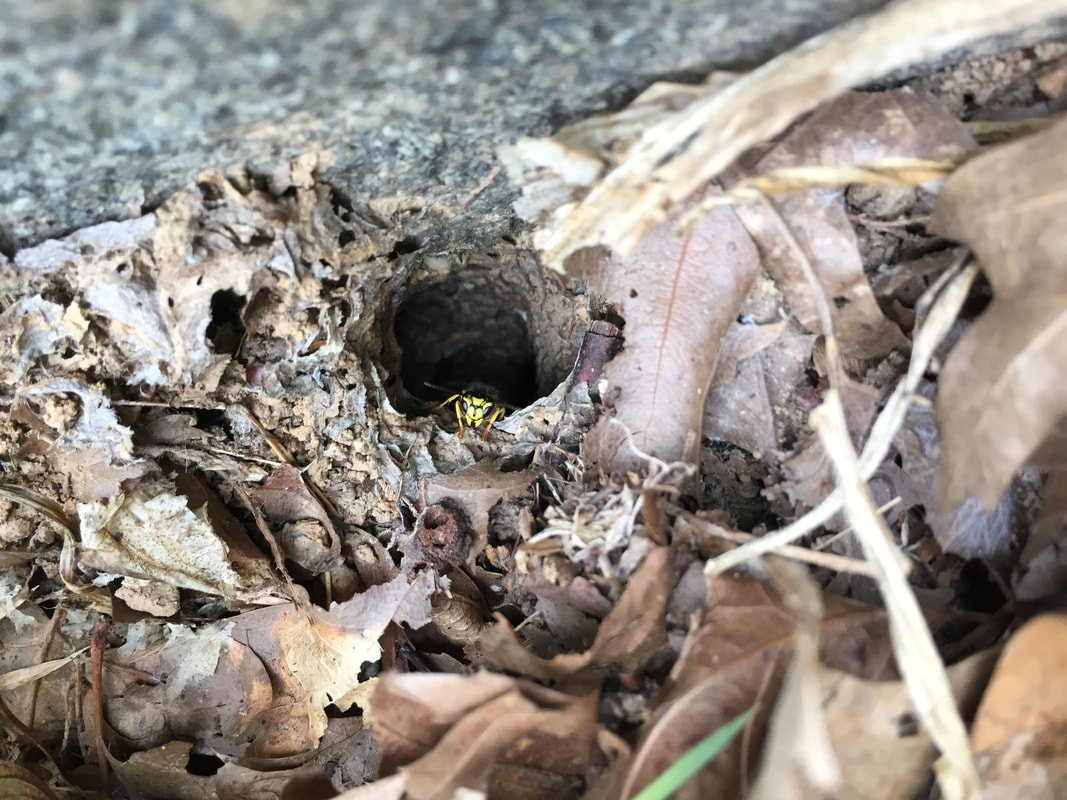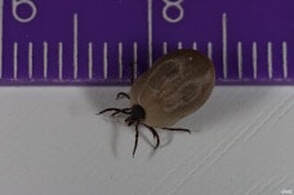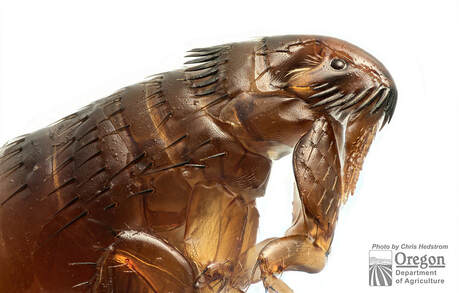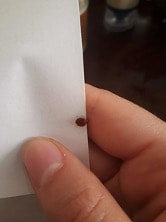|
It was a rare moment for bug lovers, where media outlets all over the US were talking about insects. In case you missed it, what was with all the metaphorical buzz? Well, TL;DR: a rare Jurassic-era insect was quietly discovered at a Wal-mart in Fayetteville, Arkansas over ten years ago. This went unnoticed until 2020, and, even stranger, no one really talked about it until 2023. So, if you STILL somehow haven’t heard the news, read on to read the bizarre story of a diagnostician’s rare and exciting discovery that truly is one for the history books! Jurassic Park…. ish Even experienced diagnosticians and entomologists are known to make an oversight or two! Dr. Michael Skvarla, who is the director of Penn State University’s Insect ID Lab, snagged an (unbeknownst to him) incredibly rare specimen back in 2012 while doing routine shopping at his local Walmart. He recounted to many news outlets that he was walking into the store to simply grab some milk when on the way inside, he saw a huge insect that caught his eye. As entomologists are apt to do, he performed a quick collection on the spot and gently plucked the sizeable bug from its resting place. He described spending the rest of his shopping trip with the specimen in hand. After getting it home, he mounted it, and told reporters that he forgot to do anything with it until 2020. Thinking it was an antlion, he was describing the Jurassic-era specimen to students in his online course when, in real time, he realized he had misidentified the insect. Even more notably, he and his students all got to come to the same conclusion together while they watched the situation unfold online during a lab course. A Specimen From Another Era Rather than an antlion, according to molecular tests, the specimen was actually a giant lacewing species that predates the dinosaurs. These insects were once common here in the US (even after the extinction of dinosaurs), but they basically disappeared by 1950. No one really knows why, but some cite light pollution and urbanization as probable causes. The discovery is a very rare find given that these insects have been absent from the US for decades. In addition, this recent sighting was the first report of this species in the state of Arkansas, ever. The next closest sighting of another one of these creatures is reported to be over 1,200 miles away. That makes this finding this lacewing in Arkansas rare enough, but even more spectacular—it is the first sighting from the whole of Eastern North America in over 50 years. How did this rare find end up on the side of a Walmart? Perhaps it was attracted to the lights and flew from a more wooded area, “like a moth to a flame”, if we’re being cliché? Or, maybe it hitchhiked in from a western Walmart truck? Either way, researchers are emphasizing this moment as a time to reflect on and further study the biodiversity found in the Ozarks, an area (clearly) teeming with life, but understudied compared to the Southern Appalachian Mountain region. The specimen can now be found in the Frost Entomological Museum at Penn State University. A publication also resulted from the find and can be accessed using this link. Insects rarely make headlines, but this is a great example of the wonderment that can ensue when insects are given a just a bit of the limelight! Please Note...This week’s post was developed from a press release sent out by Penn State that can be found here: https://www.psu.edu/news/research/story/rare-insect-found-arkansas-walmart-sets-historic-record-prompts-mystery/
0 Comments
Pesticides are a necessary tool for controlling pest insects that can transmit diseases to people and animals, attack our food, attack our homes, and cause other problems that negatively impact human health and happiness. However, it is important that when we use pesticides outdoors that we are aware of the negative impacts they can have on non-pest insects like honeybees and other pollinators. In this blog, we are going to discuss ways to get control of outdoor pests while also reducing the odds of killing helpful insects like bees! IntroductionPesticides are tools that can be used to control a wide array of pest insects. Unfortunately, helpful insects like predators and pollinators are also impacted by pesticide use. Yes, that includes ‘organic’ or ‘all natural’ pesticides, too. Most products that are labeled to broadly kill insects will kill all insects, especially after direct application (i.e., you squirt the product right onto the bug). However, there are many methods for application that can be used to target the pests you want to get rid of while preserving the safety of helpful bugs. In fact, reducing non-target effects (killing bugs you don’t want to kill) is an important goal of integrated pest management plans. Here, we list some common ways to avoid impacting non-target pollinators, specifically. Fun fact—pollinators include some bugs you might not expect, like native beetles, flies, wasps, and ants! Tips and Tricks1. APPLY PESTICIDES IN THE EVENING Most pollinators forage during the day when the temperatures are >55°F. Changing the time of spraying can make a huge difference for non-target insects. Even better—lots of pest insects are active in the evening, like many mosquito species. If you can do it, a dusk/evening application is not only less risky for pollinators than morning or mid-day, but they are also a more efficient way to target pests, too. 2. DO NOT SPRAY BLOOMS If you cannot change when you apply pesticides, you can change where you are applying them. Do your best to avoid spraying flowering plants and blooms. Most pesticidal products will have these instructions on the label. Pollinators are attracted to a wide array of blooms. Spraying elsewhere will reduce the chance that they come into contact with insecticidal products. 3. CHOOSE THE RIGHT FORMULATION The appropriate choice of formulation is another way to avoid negative non-target impacts on pollinators. Formulation refers to the active ingredient(s) (kills the pest) and inactive (all other) ingredients. Inactive ingredients are often solvents that dilute the active ingredient, and other compounds that make the product shelf-stable. Pesticides come in many different formulations. There are formulations that are less likely to kill pollinators and, when possible, these should be used where pollinators are known to be active. For instance, solutions (S) and emulsifiable concentrates (EC) dry in a short amount of time and do not leave a powdery residue like dusts (D) and wettable powders (WP). Dusty residues might impact pollinators that visit the site later, making solutions and emulsifiable concentrates a better choice for pollinator-prone environments. Granular (G) products are also a good choice for pollinator-heavy areas. Granular products are similar to dusts, but are larger in particle size so they have less risk of drifting during application. Granular products can be broadcast on the soil. They are rarely applied directly to plants and, as such, pollinators do not often make contact with them. Finally, if you are dealing with a specific pest, like ants, you could also use a bait formulation. Baits are meant to be eaten by pest insects and are typically more narrow-spectrum than other products. Pollinators are not likely to come into contact with baits as they are not attracted to them as a food source. 4. USE A LESS PERSISTENT PRODUCT Persistence refers to how long a pesticide remains active in the environment. A product with long residual activity is usually very ‘persistent’. Conversely, using pesticides that degrade rapidly, like pyrethrins, can reduce non-target mortality. A product that degrades in a few hours can be applied with relatively low risk, especially when applied when pollinators are inactive. Many tables can be accessed online which can help you decide which compounds are more/less persistent. Although these tables are often developed with honey bees in mind, they can be relevant for other pollinators as well. Many product labels also contain a “bee box” which should communicate how likely the product is to persist in the environment and pose a risk to pollinators. 5. ADJUST THE APPLICATION METHOD The method of application can also change the risk of non-target effects. Many pollinator deaths occur when a pesticide drifts from the target area into places that are attractive to or occupied by other pollinators. Spraying during windy days greatly increases the risk of drift as does using a misting system. Using granular formulations, soil treatments or application equipment that can target the spray to the intended area will keep pesticides from getting into places they shouldn’t! ConclusionsMultiple factors have contributed to the decline in pollinators including climate change, lack of forage, and parasites. Pesticide use, however, can also affect pollinator health when applications are made irresponsibly. The potentially high risks of pesticide applications to pollinators can be significantly reduced with very simple modifications like changing formulation or application time. Pollinators are a valuable agricultural resource and are ecosystem servicers that deserve our respect. However, reducing populations of pests that may make people sick is also crucial and sometimes that means using pesticides outdoors. Balancing pest control with the maintenance of the health of beneficial insects should be at the forefront of everyone’s mind when designing an outdoor pest control program. If you have more questions, here are additional resources from the Environmental Protection Agency (EPA) that may help! A lot of people throw around the term “bug” to describe any small critter with more than a couple of legs. Kids, adults, scientists, experts, and non-experts alike all use this term, especially conversationally. But what is a bug, technically? Are all insects also bugs? In this week’s blog, let’s talk about some basic entomology terminology that confuses a lot of folks! IntroductionThe word “bug” can mean a lot of things such as- coding error in a computer program, a microorganism that causes a disease, or, a small animal with four or more legs. Today, we’ll be talking about references to the last one—a small animal with four or more legs. Technically speaking, “bug” means something very specific to an entomologist. A bug is a creature that belongs to the insect order Hemiptera, known commonly as the true bugs. (All bugs are insects, but not all insects are bugs!) Because the order Hemiptera falls under “insects” (see below), this means that all bugs are insects, but not all insects are bugs. This has to do with the way scientists group animals. You might remember this from science class: “Dear King Phillip Came Over For Good Soup”. This was a way to help us remember different taxa (groups) in biology class: domain, kingdom, phylum, class, order, family, genus, and species. The more taxa an animal has in common, the more related they are. In the case of “insects” and “bugs”: 1. Kingdom (Animal) 2. Phylum (Arthropoda) 3. Class (Insecta) 4. Order (Hemiptera) There are 24 insect orders (although this number changes as insects get reclassified). There are a few characteristics that distinguish true bugs (Order: Hemiptera) from other insects. Most true bugs have a straw-shaped mouth (rostrum), or stylet, that they use to either pierce and suck juice from plants, or blood from animals. They also tend to have long, segmented antennae and wings that are leathery at the top but membranous at the bottom (“hemiptera” means “half wing”). True bugs include insects like stink bugs, bed bugs, aphids, and cicadas. Confusingly, some insects with bug in their name aren't actually true bugs, like ladybugs. Ladybugs are actually beetles (Order: Coleoptera). Beetles have mandibles meant for chewing and their wings are hard and shell-like. So... What Is NOT a Bug?Insects, in general, (not necessarily "bugs") on the other hand, are classified as arthropods that have a three-part body, a hard exoskeleton, three pairs of jointed legs (6 legs total), compound eyes, and a pair of antennae. Thus, these general rules for grouping insects into a “class” are a bit less rigid than those for a particular “order”. The criteria for groupings get much stricter as you move down the list above (from class all the way down to species). Notably, there are other animals that people might call “bugs” that aren’t actually bugs, or even insects, at all! Spiders, ticks, centipedes, earthworms, and millipedes are animals that have either more or less than six legs and none of them have three-segmented bodies. So, none of these animals could possibly be classified as insects, let alone classified as bugs. People call them bugs all the time, but that does not make it so. Spiders and ticks are considered arachnids (Class: Arachnida). They are in the same phylum as insects (Arthropoda). This means that they are distantly related, but with enough distinct characteristics to separate them once you move down to "class". Again, just because they are small, hard bodied, and have lots of legs does not mean they are insects at all, let alone true bugs. Calling all insects and all small crawling animals "bugs" is a colloquial use of the term. Many scientists and entomologists will use the term generally when speaking with lay audiences. However, if you are enlisting the help of an entomologist for an ID—keep in mind where their specialty lies and what training they have had. For instance, every entomologist may not be an expert in spider or tick identification since those critters aren't insects. Expertise in non-insect animals usually requires time and focus outside of the traditional/technical entomology discipline! 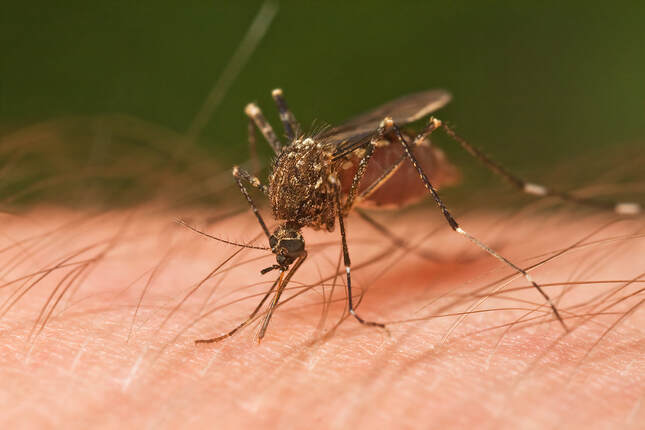 Although mosquitoes have a mouthpart capable of sucking blood, they are also not considered true bugs. Because they have only one pair of wings and a specialized organ for flying, they are in the order Diptera, or, the flies. Taxonomy can definitely get confusing!(Image Credit: JJ Harrison, Image Source: Wikimedia Commons). So, to sum it all up:
A bug is an insect, but not all insects are bugs. Additionally, some non-insects that we call bugs are not bugs at all, and they aren’t insects, either. Easy, right!? We talk about integrated pest management (IPM) a lot here at Bug Lessons. However, what is IPM? What is science-based pest control? Is there a difference? To answer these and even more questions, we will publish a multi-part series on the topic! Be on the lookout for the “Integrated Pest Management Series,” coming the second week of every month. Read on to start learning about pests, IPM, and how it all works. IntroductionPeople create farms to produce food, they modify landscapes for enjoyment and leisure, and they build structures to protect themselves from the elements. Unfortunately, pests can damage all of these creations and if left untouched, wild ecosystems. Additionally, pests spread germs that can make people and animals sick. Because pests impact our lives directly and indirectly, people spend a lot of time and money trying to keep these creatures at bay. And WOW, managing pests is no easy task. In fact, professionals often use the term “manage” rather than “control” when it comes to pests because killing every single individual often proves impossible (at least without causing significant damage to the environment). As result, the goal of many integrated pest management programs is managing a pest, or keeping the population below a damaging level (i.e., some individuals will still exist). The alternate goal is eliminating a pest, i.e., completely eradicating the entire population. Both management and elimination are acceptable strategies for pest control professionals. Which one is chosen depends on the situation. Either way, an integrated pest management strategy is usually implemented. 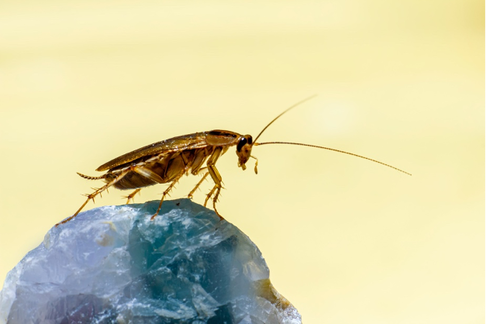 Pests like German cockroaches can spread nasty germs throughout the environment. The microorganisms they transmit can be carried on their legs and bodies and passed to people. Reducing disease transmission is an important benefit of integrated pest management in urban settings. (Image Credit: Erik Karits, Image Source: Unsplash) What IS IPM?Integrated pest management, or IPM, uses data and all tools available and reasonable to sustainably manage and control (not necessarily eradicate) pests. The U.S. government provides a more specific definition as, “a sustainable approach to managing pests by combining biological, cultural, physical, and chemical tools in a way that minimizes economic, health, and environmental risks.” The process is science-based, meaning folks use data to make the best decisions possible. IPM programs use information on pest biology, environmental data, and available technology to manage pests in a way that maximizes results while minimizing harmful impacts. Ideally, pesticides are only used after data shows there is a reason and need. By using IPM, professionals can reduce the amount of pesticide applied. Initially, scientists developed IPM for agricultural systems. Pesticide applications can be very costly and have unintended consequences on the environment. Once the negative effects of pesticide overuse were understood, integrated pest management was developed to help offset such effects, as well as reduce the cost of pest control. As a result, IPM was born and provides the following benefits:
Now, professionals use many of the principles of IPM to manage insects in other settings, including urban environments, too. There can be some major differences. For example, traditional IPM programs accept that some pests will be present in a field. However, in a home, what is an acceptable number of bed bugs? (The typical answer is ZERO!) So, while the specifics of a program might look different for bed bugs (urban) versus boll weevil (agricultural), most IPM plans contain the following critical components:
Final ThoughtsStudies have shown that using IPM can reduce the amount of chemical needed to manage a pest population while still achieving excellent results. For more information on the implementation of IPM in various settings, check out the National Roadmap for Integrated Pest Management, which aims to increase adoption of IPM in the U.S. An IPM program can be complex and requires many different parts. However, the benefit of IPM to people and the environment is worth tackling the complexity. To help everyone achieve the best results, Bug Lessons will release a series of blogs on this topic, including taking a deep dive into all of the steps above. The goal of this series is empowering both professionals and consumers with the knowledge needed to sustainably manage any pest. You’ve probably seen or at least heard of Terminator, right? Killer robots, violence, decimation of humans? Now, can you imagine if those robots were lowly ants? Although individual ants can’t accomplish all that much on their own, a collective group of them can achieve surprising feats. Researchers are operating on that premise to build groups of cooperative robots capable of completing complex tasks. Will these robots be the end of humanity as we know it? Thankfully, probably not. The real story, although less violent, is still interesting—so read on to find out more! Simple Robots, Complex AbilitiesEusocial insects work cooperatively, divide labor, and live in elaborate nests constructed by colony members. This cooperative action allows social insects to solve complex problems that they likely could not solve individually. Harvard researchers became interested in this phenomenon and were curious as to how insects manipulate their environment to create complex, functional architecture. They began by investigating the behavior of carpenter ants and their ability to, as a team, escape from a soft “corral”. Researchers watched the ants behave inside of these ‘corrals’ and noted that before trying to escape, the ants wandered around at random and talked to one another using their antennae. Insect antennae are comprised of a number of specialized cells that allow them to interact with their environment in all sorts of ways. They are predominantly used for smell. Using antennae to interact and communicate with other insects is called antennation. The authors saw many ants engaging in antennation before they started working together. Once a few ants got together and started excavating, more and more ants started arriving. Eventually, excavation at this point started proceeding faster than in other areas, allowing ants to tunnel out. Mathematical models of this behavior showed that ants can only successfully get out of a corral when they i) work together sufficiently strongly while ii) excavating together efficiently. Making Robot Ants, or "RAnts"Building upon their mathematical models, researchers constructed robot ants to see if they could also communicate and cooperate in the same way. They used “photoromones” instead of pheromones, to initiate robot behavior. Photoromones are fields of light that researchers used to mimic antennation and chemicals that ants use to communicate with each other. They programmed the RAnts to follow the gradient of a photoromone, avoid other ants where the photoromone density was high, and to pick up obstacles where photoromone density was high, and move them to an area where density was low. With this code, RAnts were able to successfully, and quickly, escape confinement. ConclusionsThis study revealed that even complex events and behaviors stem from simple rules. The ability of the robots was robust— even if a few ants failed, the team could still complete the task correctly. These findings may contribute to the field of AI and robotics, where engineers that input simple, reinforceable rules could build a team of robots capable of achieving grand outcomes. The work will also help humans better understand the evolution of cooperative behavior in animals. All around, some high-level findings resulting from some very tiny insects!
Sometimes, pest issues are easily resolvable. Other times, you might wonder, “What the heck do I do about these ants?”, or something similar. Tough questions leading to prolonged pest problems might require the help of a professional pest management company to resolve. With so many choices out there, how do you choose the right company for the job? Read on to find out some important things to consider and questions to ask when you can’t manage pests alone and you need to hire a pro. Tips and TricksFirst of all, when you’re in the market for a pest control company, talk to several. It can be a good idea to get multiple (3-5) perspectives and multiple bids before making a decision. As you begin evaluating your options, keep the following tips in mind: 1. EXPERIENCE
4. SERVICE PROTECTION
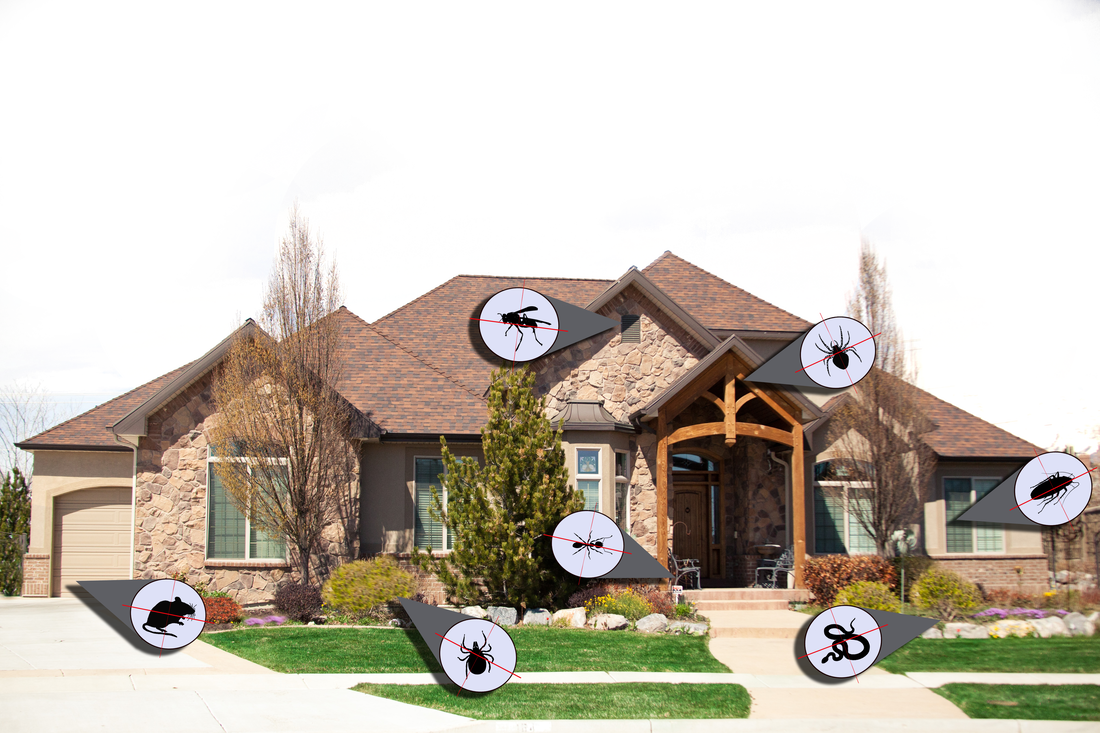 Do you understand the treatment plan? Did the technician discuss integrated pest management with you? A thorough company will assess your entire home for issues and likely go over a multi-pronged approach to solve your pest problems. Ideally, technicians will not rely solely on insecticides to solve complex pest issues. (Image Credit: Insight Pest, Image Source: Flickr) ConclusionsEach state will differ in terms of the rules and regulations are concerned for pest management licensing. If you have concerns, you can check with regulatory agencies in your state to be certain that the company you choose is properly licensed and in good standing with no pesticide application violations. A good company will make you feel at ease about a treatment plan, will make you feel heard and understood, and will have the expertise and experience needed to solve your pest problem. If you would like more information, here are a few articles that can help. Remember- these may have some state-specific components. Reach out to an extension specialist in your own state if you have additional questions and/or concerns!
IntroductionEnjoying your lawn and a relaxing party filled with food and outdoor fun is what the spring and summer seasons are all about. However, uninvited guests like ants, bees, and mosquitoes can really put a damper on the day. By following a few simple steps, it is easy to make your next outdoor event much less buggy. Keep reading for some tips to prevent unwanted guests from ruining your next BBQ or outdoor party! 1. Cover or Hide the FoodSome insects, like mosquitoes, are attracted to humans and human odors. However, most pests that ruin outdoor parties are attracted to foods that people eat. Flies, yellowjackets, ants, bees, and other bugs enjoy many of the same fatty and sugary foods that we do. Meats, sugary drinks, fruits, and other goodies should be served inside whenever possible. If you are serving food indoors, make sure that pest entry is prevented by keeping screens, doors, and windows closed. Screens should be inspected for rips or tears prior to gatherings and repaired whenever necessary. Gaps around doors and windows should be sealed. If food is served outdoors, it should be covered appropriately, or, food should be stored in a container/cooler. Bugs will crawl into and hide in bottles and cans, so plastic or glass cups should be used if possible. Plastic is less susceptible to breaking and other accidents, too. 2. Tidy UpEven crumbs are enough to attract most insects to an area. Leftovers, spilled foods, and other free meals for pests should be cleaned up as soon as possible. Utensils and dishes should be brought indoors or disposed of as quickly as possible after use. Food remnants should be rinsed or removed prior to disposal. Garbage bags should be used to contain trash. Any liquids should be emptied and the cans/bottles rinsed before being bagged. This will prevent puddling at the bottom of receptacles that can attract ants and flies even after the party has ended. Make sure all garbage bags are sealed tightly before they are placed in trashcans. The lids on trashcans should close tightly to discourage entry by racoons, rats, mice, and other vermin. If you have pets, do not forget to scoop up pet waste, which can attract ants and flies.  An overflowing trash can with loose garbage is asking for trouble. Make sure to keep garbage tightly sealed in garbage bags, rinse containers holding liquid prior to disposal, and make sure the lid of the trashcan closes tightly to eliminate free meals for pests. (Image Credit: theblowup, Image Source: Unsplash) 3. Reduce FragrancesFragrant flowers or candles mimicking flowers can attract stinging pests like wasps. Try to reduce the amount of floral scent at your next party to discourage wasp presence. This is especially important if children or adults with allergies (to stinging pests) are attending the party. 4. Reduce Sources of Standing WaterMosquitoes are one of the most annoying pests to show up uninvited to a party. You can reduce the number of mosquitoes you see all summer long by removing or draining sources of water in the yard that could serve as a breeding ground for these pests. This may include kiddie pools, birdbaths, planters, gutters, etc. These water sources should be monitored and drained once per week to achieve optimal results prior to the day of your event. 5. Wear Insect RepellentWearing insect repellent on exposed skin can reduce the amount of interaction with biting pests like mosquitoes and ticks. The Environmental Protection Agency (EPA) has a tool for use that will help you find the repellent that will work best for you depending on the pests you need to repel. Also, keep in mind that citronella candles and other gimmicky mosquito prevention products are not effective. 6. Prepare and Protect Your GrillInsects love to take up shelter in unused grills. Earwigs and other pests may make their homes in the cover, too. Before you fire up the grill for the first time, inspect inside for wasp or other nests. Scrape away old food and debris that can attract insects and rodents. Remove and dry out fabric covers that have been sitting for long periods of time. Insects will infest control knobs and tubes as well—inspect these before use. You can cover the gas lines with plastic or foil over the winter to prevent pest entry. Finally, before your first use, let the grill get hot for at least ten minutes to kill any existing freeloaders. ConclusionsA summer party is a great way to connect with friends and loved ones, but they can quickly turn sour when pests show up. When planning your next gathering, be sure to consider preparing the lawn and landscape to be less hospitable to unwanted animals. You might want to consider a professional inspection by a pest control company if you are dealing with severe pest pressure. They may be able to apply products that can control bugs for multiple weeks as well as suggest ways for you to pest-proof your yard based on the most annoying insects showing up in your area. Last week, we talked about the dangers that fleas and ticks pose to our family pets. Fleas and ticks live on our pets for at least some of their life cycle, which in some ways makes them easy to spot and control. But what happens when we send our pets outside and they are attacked by insects that we can’t necessarily see or prevent? This week, we’ll talk about how to reduce interactions between your pet and bothersome lawn and landscape pests. INTRODUCTIONIn our previous blog, we discussed the problems that parasitic pests cause for animals. Specifically, how fleas and ticks can threaten a pet’s comfort, health, and (in extreme cases) life. However, we’ve all seen the “cute” photos of dogs that sniffed a bee a bit too close—resulting in a puffy snout and embarrassed pup. So, in this blog, we’re going to discuss the pests that live around your home (but not necessarily on your pet) that you may want to keep your pet away from, and how you can reduce their presence. Specifically, we will focus on mosquitoes, stinging wasps, and stinging ants. PESTS THAT AFFECT PETS1. MOSQUITOES Pets are not immune to mosquito bites. In fact, while many mosquitoes prefer mammals, there are definitely species that will attack birds, reptiles, and amphibians. In addition to itching and discomfort, mosquito bites can transmit some not-so-nice parasites and pathogens to pets, too. One of the most devastating is the transmission of heartworms from mosquitoes to pets, mainly dogs. These parasites block the flow of blood to major organs and are typically not detected until the disease is very progressed. At this stage, treatment is difficult and the animal can die. For cats that are infected, lung failure can occur due to inflammation triggered by the presence of heartworm larvae. In addition to heartworm disease, mosquitoes may transmit eastern equine encephalitis (EEE) and West Nile virus (WNV) to pets, but infection rarely causes symptoms or problems for small animals like cats and dogs (unlike horses). With the range of disease-transmitting mosquitoes increasing and the risk of novel pathogens emerging, pet owners should prioritize protecting pets from current and future mosquito-transmitted diseases. Luckily, there are a number of solutions to do just that! Because heartworm disease is a major threat from mosquitoes, veterinarians recommend that animals take heartworm preventatives year-round. These products work by killing heartworm larvae as they enter the animal’s bloodstream. In addition, there are other oral and topical medications for fleas and ticks that are also labeled against mosquitoes. These products may repel mosquitoes before they are able to bite. Never use a mosquito repellent that is labeled for humans on a pet. These products may cause unexpected side effects. In addition to topical and oral medications, there are steps you can take to prevent mosquitoes from breeding and simply existing around your home, which would of course prevent pet contact with these critters.
3. FIRE ANTS Veterinarians treat small animals and pets more often for fire ant stings than any other animal. Fire ants will often sting the hairless areas of an animal, such as the eyes, ears, belly, and muzzle—all of which are very sensitive areas. Fire ant stings are painful, can become infected, and some pets may have serious allergic reactions to their stings. Because mounds can house thousands of fast-moving, aggressive stinging ants, the animal may suffer thousands of injuries before a human can intervene. Like wasps and hornets, protecting your pets from fire ant stings begins with protecting your lawn from fire ants. If your pet is being actively stung by fire ants, brush them off as quickly as possible while avoiding getting any ants on yourself. Do not use water—it does not phase them, and ants can simply hang out and continue stinging. When you are applying pesticides for fire ant management, you must keep pets away from the area for the length of time specified on the product label. Be especially sure to keep pets away from ant baits, which our furry friends will readily consume. CONCLUSIONS.Biting and stinging pests can cause pain and discomfort for pets. In addition, bites and stings from insects like mosquitoes, wasps, and ants pose significant risks to animal health. Remember to talk to a veterinarian for the best options to protect your pet from mosquito bites. Landscapers and pest management professionals can help you create a pest-free yard. Finally, entomologists are a great resource for pest management in the environment too! Like many pests, bites and stings are an issue best solved with an ounce of prevention rather than a pound of cure. For many of us, pets are an integral part of the family. We often give them the same love, affection, and attention that we give to a human family member. They typically sleep, play, eat, and travel with us—engaging in many of the same activities that humans do. Unfortunately, that means that they are susceptible to many of the dangers that we are, and that includes attack by insect pests. In this week’s blog we discuss insect/arachnid threats to our furry friends and how to keep our pets happy, healthy, and pest-free. PESTS THAT AFFECT PETS1. TICKS Ticks are exceptionally dangerous for pets, especially those that spend the bulk of their time outdoors. Because they attach to animals and feed on blood for multiple days, they are exceptionally good at transferring microbes into the bloodstream of their host. Deer ticks are probably the bad guys you’ve heard of most—as they can transmit Lyme disease. In dogs, this could manifest in lameness, joint swelling, fatigue, and loss of appetite. In severe cases, there are serious kidney complications associated with Lyme disease in dogs, too. Lyme disease is caused by an infection with a bacterium, Borrelia burgdorferi that is spread to people and animals through tick bites. Animals typically show signs of chronic infection 2-5 months after infection. In addition to Lyme disease, dogs are also susceptible to an array of other diseases transmitted by ticks, including canine ehrlichiosis, anaplasma, Rocky Mountain spotted fever (RMSF), babesiosis, bartonella, and hepatozoonosis. Some of these are debilitating and when they are, they are often fatal. Ticks not only affect dogs, but they impact the health of cats, too. Ticks can transmit multiple diseases to cats including cyauxzoonosis, tularemia, anaplasmosis, and of course, Lyme disease. Infection with pathogens that cause these diseases can cause secondary infections, anemia, and tick paralysis—which can be life threatening. To prevent ticks from latching on to your furry friend(s), take a two-pronged approach that includes speaking with a veterinarian and modifying the lawn and landscape to be less tick-friendly. First and foremost, take your pet in for a check-up with your primary veterinarian and discuss a tick prevention product that works best for you. Although over-the-counter tick prevention is available and can be efficacious, your vet will know which of these are appropriate for your pet based on their medical history. Additionally, there are multiple product forms available and making an informed choice can feel overwhelming. Most oral and topical products require you to reapply once a month, or once every few months. Make sure to log these dates in your calendar so you do not forget! Missing an application gives ticks a window to attack your unprotected pet.
For more information on tick distribution, life cycle, and habits, see this handy website from the Centers for Disease Control and Prevention. 2. FLEAS Fleas are small, blood sucking insects that have plagued animals since, basically, the dawn of time. It is unlikely that an animal will contract a disease from flea bites, but there are certainly a number of health risks that fleas pose to pets, and people too. Fleas can transmit both plague and murine typhus (although this is rare). More commonly, fleas cause parasitic dermatitis. This is a problem that arises when pets are allergic to flea saliva; flea-related dermatitis can cause inflammation, dramatic hair loss, and infection. Certain tapeworms are passed to animals from fleas, too. Finally, flea infestations can lead to cat scratch fever—an infection caused by the bacterium Bartonella henselae (see link above). Unlike ticks (excluding the brown dog tick) fleas can survive and reproduce in the indoor environment. This means that an additional approach is needed for flea management when we compare flea infestations to tick infestations. In addition to treatment of the animal and management of the lawn, steps must be taken indoors as well to eradicate fleas. If you see your pet itching more than normal, see small “pepper flakes” (flea poop) on your pet’s skin or in the environment, and notice small, jumping insects on your pet—it is time to take action. Ideally, you can stop a flea problem before it starts. This involves taking the steps we outlined above in the tick section. Talk to your veterinarian about flea prevention products, which luckily tend to treat prevent ticks, too! Once that has been taken care of, you can use a flea comb to remove fleas that are present, or, as a preventative tool to make sure no fleas are around. If your pet has an active flea problem, wash them with a medicated shampoo (your vet can recommend a suitable product). These shampoos are drying to your pet’s skin and should not be used for long-term flea treatment or prevention. Because fleas thrive in environments that pets frequent, it might be a good idea to hire a pest management professional to conduct a lawn and perimeter pesticide treatment. This is not always necessary, but may be prudent when fleas have been an ongoing problem. They are also able to treat the indoor environment to reduce the number of fleas you see while you are engaging in other treatment methods. Fleas are an issue that cannot be solved with pesticides alone, though. Eggs and larvae (juvenile fleas) must also be addressed in order to prevent the cycle from starting again. Be sure to launder infested items and vacuum the home frequently. These practices will not only remove fleas, but they will also remove flea droppings from the environment, which juveniles need to feed on to survive. Finally, avoid using over-the-counter flea bombs indoors. Pesticide does not often get to the areas where fleas are harboring and fleas are becoming resistant to the active ingredients used in many of these products. CONCLUSIONSFleas and ticks are not a problem you should ignore. Flea and tick bites pose significant risks to animal health in addition to making pets uncomfortable due to scratching and allergic reactions that can follow. It is important to place your pet on a preventative treatment year-round to keep fleas and tick populations from building up in and around the home where they may start biting people, too. Entomologists are a great resource for pest management in the environment, but for fleas and ticks—make sure you discuss a prevention plan with your veterinarian, too. Do not be fooled by cheap products that make bold claims. There is no miracle product or solution and treatment takes patience, especially for fleas. However, the comfort your best friends enjoy once they are pest-free makes it all worth it, right? Be on the lookout for our next piece which will cover mosquitoes and stinging pests! No one wants bed bugs. Unfortunately, that doesn’t prevent some of us from dealing with them on occasion. In many cases, bed bug problems start with just one intruder. Perhaps this drifter smuggled in on luggage you took on a trip, or in a beautiful antique chest you thrifted. Well, don’t stop thrifting just yet—these situations are rare! But, just in case, let’s review some tips to help you avoid taking an unwanted guest home with you while you are out and about. Read on to find out more about keeping bed bugs out of your personal space. KNOW YOUR ENEMYThe first step in combating a bed bug problem is knowing as much as you can about them. In the case of bed bugs, this includes being able to identify what they look like, signs of their activity, and where you’re most likely to find them. It can’t hurt to also understand a little about how they behave. Let’s review some of these things right off the bat. Bed bugs are hematophagous, meaning, they have to consume blood to survive, and they love human blood. Like mosquitoes, they use a needle-like mouthpart to pierce human skin. After a bed bug feeds, you may be left with a welt similar in appearance to a mosquito bite. In severe cases, hives, wheals, or blisters can result. However, many people do not react to bed bug bites at all. For that reason, bites alone are not a reliable sign of a bed bug problem. Unlike lice and ticks, bed bugs do not remain on the host very long when they feed, so you’re unlikely to find them on your skin or in your hair.
Bed bugs like to be packed in tight, and they can easily hide in crevices as thin as one sheet of paper. Thus, visual inspections for bed bugs must be thorough. Sometimes, instead of looking for a live bug, it can be easier to look for signs of their activity (to start). For instance, look for fecal spots or shed skins, which are often left out in the open and can be easier to find. Look for these signs of activity near where you sleep. In introductory infestations, that is the most likely place to catch bed bugs. However, do not be confident that you have an active infestation until you have located live insects. TIPS TO KEEP BED BUGS AWAYNow that you know what to look for, let’s also go over a few things you can try to keep bed bugs from coming home with you after a trip, when perusing used goods, or when you think you’ve walked into an infested area/dwelling.
 To avoid bringing bed bugs into your home after travel, consider isolating fabrics by bringing some plastic bags. Pack luggage loosely, neatly, and keep items out and easy to see. If you think some of your fabrics have come into contact with bed bugs, double bag them in plastic and tie a tight knot. (Image Credit: https://pxhere.com/en/photo/1356828) WHAT IF I FIND BED BUGS DURING TRAVEL?
CONCLUSIONSThe thought of picking up bed bugs is scary. However, if all of the above steps are followed, it is very possible to avoid taking bed bugs home with you and dealing with an at-home infestation. It is always probable that you could take a bug home with you just by being out and about, but taking precautions help you lower that probability significantly. Now, sleep tight, and don’t let the bed bugs bite! |
Bug Lessons BlogWelcome science communicators and bug nerds!
Interested in being a guest blogger?
Archives
November 2023
Categories
All
|
